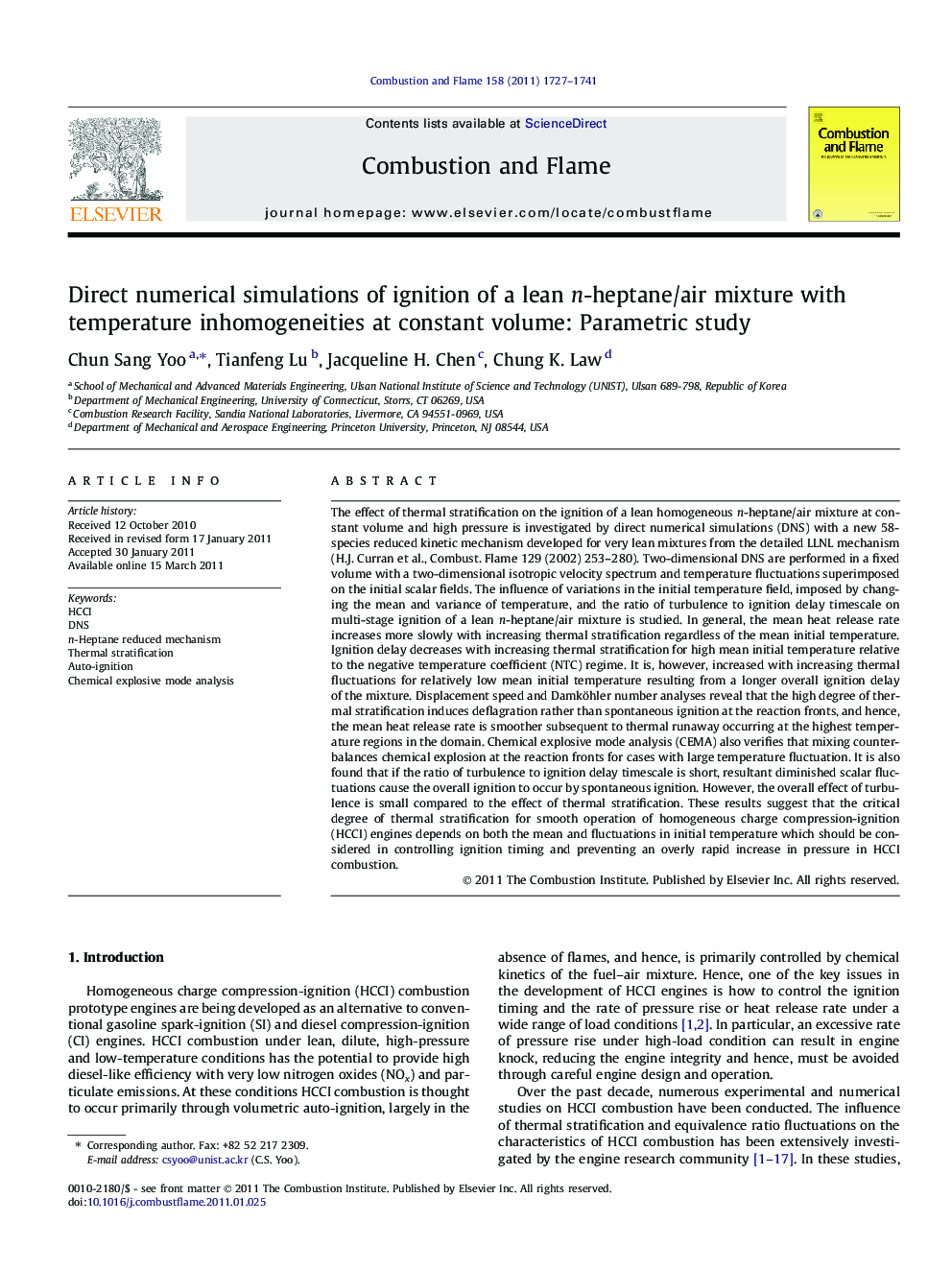| کد مقاله | کد نشریه | سال انتشار | مقاله انگلیسی | نسخه تمام متن |
|---|---|---|---|---|
| 169461 | 458007 | 2011 | 15 صفحه PDF | دانلود رایگان |

The effect of thermal stratification on the ignition of a lean homogeneous n-heptane/air mixture at constant volume and high pressure is investigated by direct numerical simulations (DNS) with a new 58-species reduced kinetic mechanism developed for very lean mixtures from the detailed LLNL mechanism (H.J. Curran et al., Combust. Flame 129 (2002) 253–280). Two-dimensional DNS are performed in a fixed volume with a two-dimensional isotropic velocity spectrum and temperature fluctuations superimposed on the initial scalar fields. The influence of variations in the initial temperature field, imposed by changing the mean and variance of temperature, and the ratio of turbulence to ignition delay timescale on multi-stage ignition of a lean n-heptane/air mixture is studied. In general, the mean heat release rate increases more slowly with increasing thermal stratification regardless of the mean initial temperature. Ignition delay decreases with increasing thermal stratification for high mean initial temperature relative to the negative temperature coefficient (NTC) regime. It is, however, increased with increasing thermal fluctuations for relatively low mean initial temperature resulting from a longer overall ignition delay of the mixture. Displacement speed and Damköhler number analyses reveal that the high degree of thermal stratification induces deflagration rather than spontaneous ignition at the reaction fronts, and hence, the mean heat release rate is smoother subsequent to thermal runaway occurring at the highest temperature regions in the domain. Chemical explosive mode analysis (CEMA) also verifies that mixing counterbalances chemical explosion at the reaction fronts for cases with large temperature fluctuation. It is also found that if the ratio of turbulence to ignition delay timescale is short, resultant diminished scalar fluctuations cause the overall ignition to occur by spontaneous ignition. However, the overall effect of turbulence is small compared to the effect of thermal stratification. These results suggest that the critical degree of thermal stratification for smooth operation of homogeneous charge compression-ignition (HCCI) engines depends on both the mean and fluctuations in initial temperature which should be considered in controlling ignition timing and preventing an overly rapid increase in pressure in HCCI combustion.
Journal: Combustion and Flame - Volume 158, Issue 9, September 2011, Pages 1727–1741